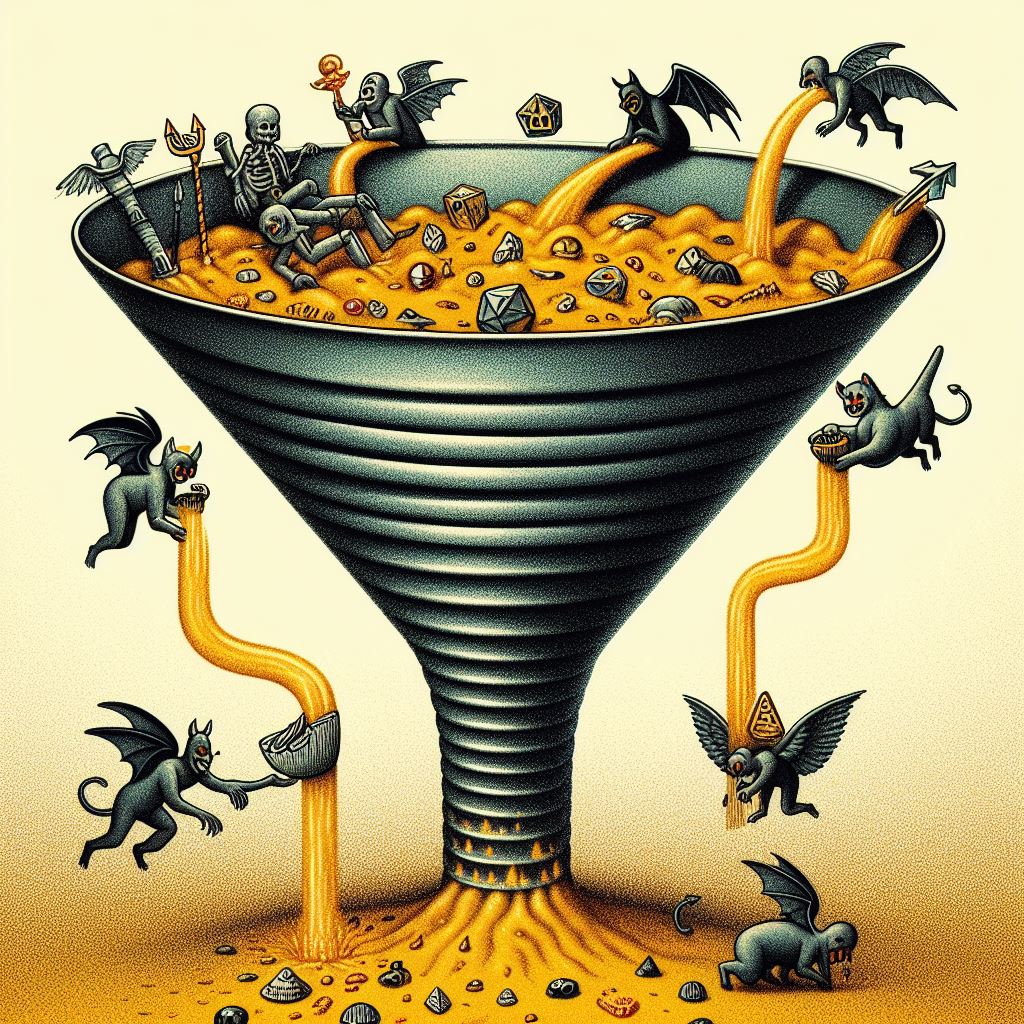In the world of product management, success is often measured by how many users sign up, complete a purchase, or stay engaged with a platform. But for Inverted Product Managers, our equation flips. Our focus is on preventing negative actions, protecting users from harm, and ensuring a safe and secure online environment. This means we deal with a unique concept: the “badness funnel.”
I am an Inverted Product Manager (PM). Inverted PMs work on problems like security, abuse, infrastructure where our success is when nothing happens. Abuse is avoided. Our strategy is different, the way we communicate is different, our users are different and our metrics are different. All of this has consequences for how we work. Read the original post if you haven’t already. In this post, I go deeper into one of the concepts: The badness funnel.
The Stages of the Badness Funnel
Just like traditional product managers, we as inverted product managers also deal with a funnel but it’s the funnel a bad actor completes to achieve their goals. I call this the “badness funnel”. This funnel has distinct stages that a bad actor navigates to get to their desired outcome of monetary gain, or other malicious objectives.

Stage 1: Before the Badness
This is the preparation phase where bad actors gather resources or set up the groundwork for their malicious activity. This could involve stealing login credentials, creating fake accounts, or acquiring fraudulent payment instruments.
What we can do: We can try to create an environment or system that is as safe as possible. We could shield users from things that might help the bad actor get what they need such as phishing pages or malware. We can also solidify our systems to prevent the creation of fake accounts or addition of suspicious payment instruments.
Stage 2: At Badness Start
This marks the initial malicious act. The bad actor might infiltrate a user account, post harmful content, initiate a fake transaction, or exploit a system vulnerability.
What we can do: This is our final chance to prevent something bad from happening. Here we have to provide solid login protections, prevent certain features from even being available to the user with the fake account or malicious payment instrument.
Stage 3: During the Badness
Here, the bad actor is actively causing harm. They might be placing fraudulent orders, manipulating algorithms with fake reviews, or compromising a hijacked account.
What we can do: We can look for patterns that help us identify bad actors in the middle of causing harm. Our products might seem complex sometimes but the number of things a bad actor can do to make money for example is still limited. Our objective is to contain the badness, prevent it from becoming worse. We should try to intervene as fast as possible balancing user friction.
Stage 4: After the Badness
This is where we, as inverted product folks, step in. Our systems have caught the bad actor, the abuser, the account hijacker, the fake seller and we acted on it. We might have suspended the account, taken down a piece of content or removed a seller from our platform.
What we can do: We should assist affected users, restore trust, and strengthen our defenses to prevent similar incidents. Here we can provide the user with a recovery flow and we can generate ground truth data to help improve our systems and catch future similar acts of badness. Most importantly all of our recovery flows should transmit empathy and help the user to feel understood and taken care of.
Optimizing the Badness Funnel: A Balancing Act
An essential aspect of the badness funnel is that our objective is inverted like so many aspects of our role. Unlike traditional funnels where we aim to maximize conversions, our goal is to minimize entries and maximize drop-outs at every stage (for users that create badness).
However, it’s crucial to remember that sometimes bad actors and legitimate users end up being mixed within the funnel. A user placing an order or posting a comment could be a genuine customer or a bad actor in disguise. So, we should try to minimize mistakes to avoid inconveniencing legitimate users or hurt our business.
The Duality of Funnels for Inverted PMs
While the badness funnel is unique to inverted product managers, some of us might also deal with traditional funnels. For example, we might design features to encourage users to update their security settings or upgrade their accounts for enhanced protection. Here, success is measured by user adoption, similar to how traditional PMs approach funnels.
But, even when we encounter traditional funnels, I think as inverted product managers we should have a different perspective, again inverted. Ideally, our security features should be seamless and protect users without requiring their attention. Think of the last time you started your car, did it ask you to set up your airbag? If users get into our product we could consider whether we could have done for them what they are trying to do. Either protecting them automatically, or making it so their account is automatically set up secure. Ideally success is when our users never see our work and if they do, that it interrupts them as little as possible.
Of course there is nuance, there are probably situations where this is not true. We also face the challenge of making users aware of the security they are getting included in our product. This would make them feel better and help us get credit for the hard work we do. But that is a different blog post altogether.
Using the Badness funnel concept
Here are some ways you could approach to bring the badness funnel into your product
- Identify the funnel by knowing what bad actors do to extract value from your product or your users in a malicious way.
- Once you have the stages mapped, see how many defenses you could deploy in each stage to prevent, detect, and contain badness as well as help users recover. This can help you as an inverted PM define the problems that should be solved first.
- Try to get metrics in the funnel and use these to report to stakeholders
The impact of the badness funnel
As inverted PMs our work is behind the scenes and upside down in many ways. But what keeps me going as an inverted PM is the knowledge that I am saving people from a bad experience. The Badness funnel helps me consider the complete picture, ensuring we defend users everywhere and tell the story. It’s the people that we protect that motivate me, because remember: saving one is worth it.


